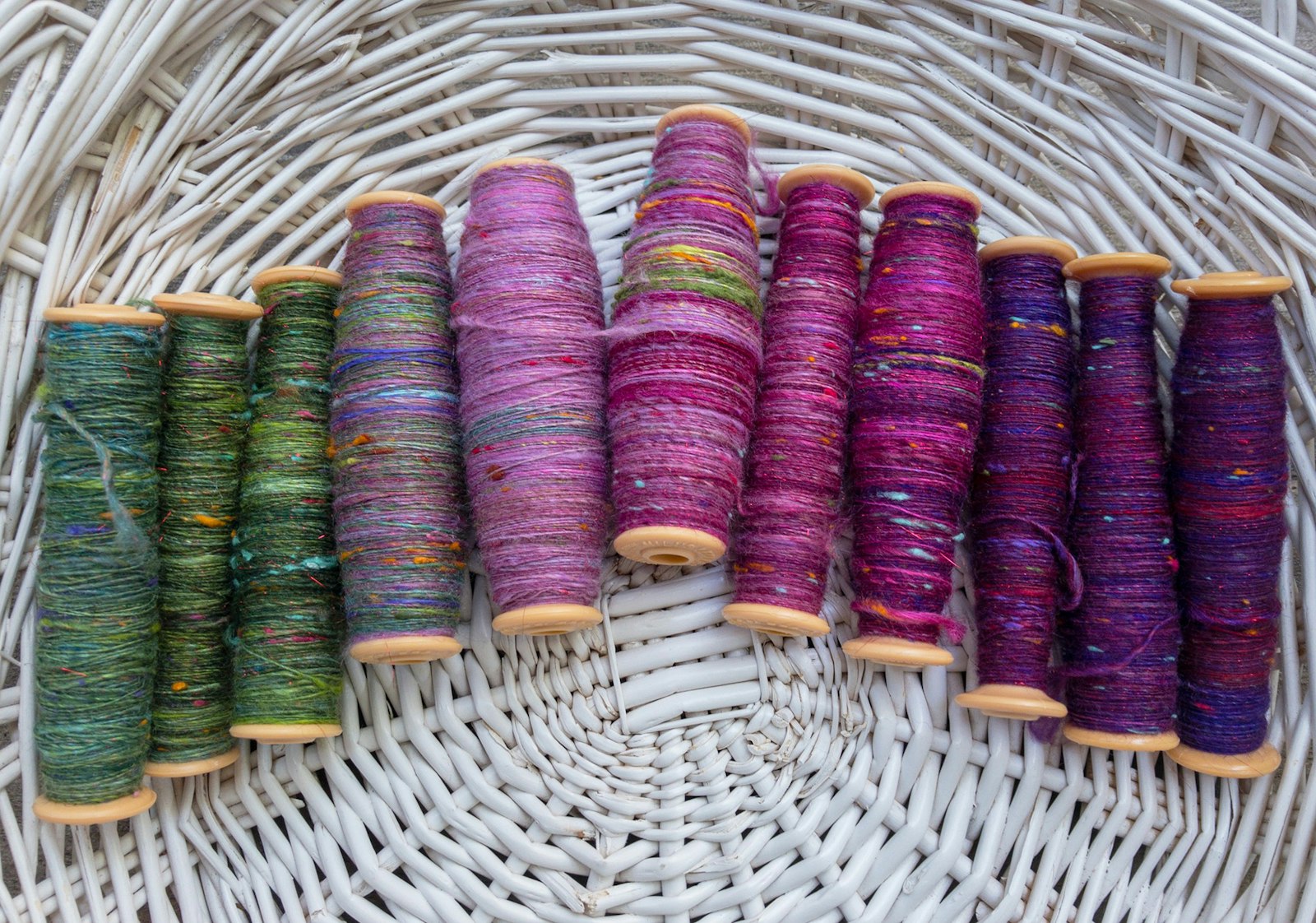One of my best early spinning purchases was a bobbin winder. A spare bobbin for my spinning wheel cost about $12 back then, but specialty bobbins can go for nearly $100. My investment in a $150 bobbin winder and $3 per storage bobbin have really paid off—even before I started weaving, when those bobbins started doing double duty.
Saving money isn't the only reason to use a bobbin winder, and it's far from the best reason. Kate Larson always rewinds her bobbins to ply for big projects, and she shared some of her best bobbin-winder advice for choosing and setting up winding equipment.
There's just one thing I've been guessing at all this time: Between connecting your singles to the bobbin and pulling off the full bobbin... What comes in the middle?
It's All in the Wrist
Early on, I did get two excellent pieces of advice on using a bobbin winder: Oil often where indicated, and only turn the handle clockwise. Failing to do so would have turned the cast iron and brass tool into metal shavings and caused an awful racket. (Cleaning it with a rag and cotton swab once in a while helps, too.)
But how do you actually fill the bobbin? Do you line up each turn as closely as if checking wraps per inch? Do you pull the yarn taut or let it loop on softly? I developed my own methods by trial and error, but I recently got advice from a different source: a weaver.
Handwoven editor Susan E. Horton also winds a lot of bobbins, and she put together an article and short video with some of her favorite techniques and tips for protecting your table from the bobbin winder, protecting your hands from the friction of speeding yarn, and filling a bobbin so that the yarn will run off it freely instead of sticking to itself.
The yarns Susan winds are finished, plied yarns, so I have a few experiments to try. Can my singles stand up to the tension of winding a firm bobbin, or do some delicate yarns need special treatment? If I zigzag my singles back and forth across the bobbin, will it be easier or harder to find that elusive end after a break?
I'm excited to try. How do you wind a bobbin?

